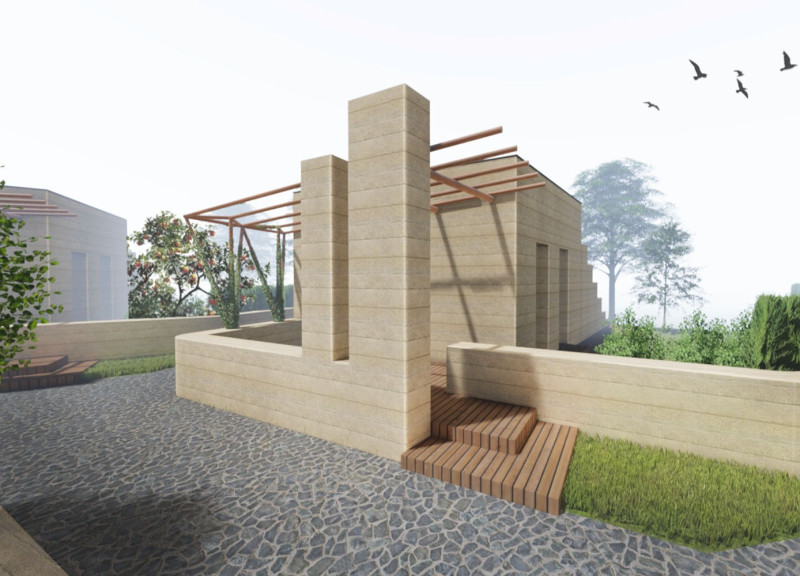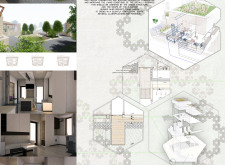5 key facts about this project
The project focuses on creating a communal living environment that aims to foster social connections and address the needs of individuals within an urban setting. It recognizes the challenges of excessive individualism and globalism, which can lead to a loss of community and personal connections. By prioritizing the construction of residences that promote shared living experiences, the design seeks to enhance the quality of life for socially deprived groups while emphasizing the importance of community ties.
Design Approach
The approach utilizes a slightly trapezoidal form that offers both visual curiosity and practical use. This form allows for a variety of spaces within the building, accommodating the diverse needs of residents. The design mirrors its urban context, taking cues from local traditions to ensure relevance and connection to the surrounding environment.
Material Choice
While the presentation does not specify exact materials, it emphasizes the importance of employing local resources in the construction process. This strategy aims to keep costs manageable and empowers the local workforce. The choice of affordable materials aligns with the project's goal of providing social housing, ensuring that the design remains accessible to those in need.
Spatial Configuration
The layout of the building is intentional, providing ample space for various activities and functions. This flexibility allows residents to adapt their living spaces to suit their lifestyles. Key aspects include the potential for personal expression within individual units and communal areas that foster interaction among residents.
Light and Nature
The design thoughtfully incorporates natural light, which enhances both comfort and the overall atmosphere inside the building. There are intentional transitions between indoor and outdoor areas, allowing for easy movement and connection to nature. Features for outdoor crop production and energy solutions are included, promoting self-sufficiency among residents.
The structure includes open spaces that serve as both private retreats and places for community gatherings, enhancing interaction and building friendships among residents.



















































